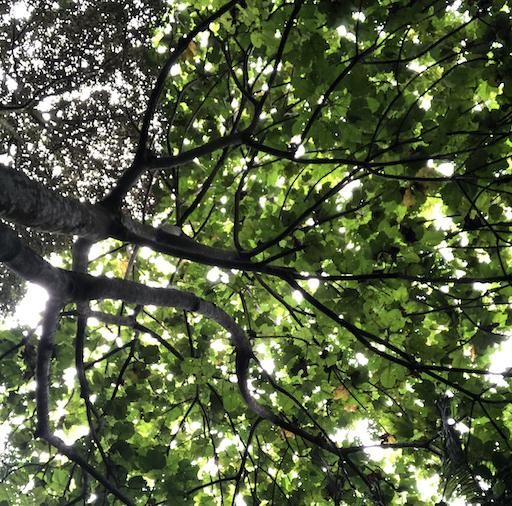I was one of those children that collected small rocks that caught my eye, whether on the beach or along a country path. It could seem strange to have a sentimental attachment to a rock – a seemingly inanimate, cold fragment of the Earth. But rock collecting is so much more than as it first seems.

According to National Geographic, the definition of rock to a geologist is “a natural substance composed of solid crystals of different minerals that have been fused together in a solid lump.” This fusion of different minerals assembled in various patterns and textures makes each rock a work of art. Every rock is unique, and that is why we may become more drawn to or even attached to ones that catch our eye.
Rocks are like fire
In our deepest subconscious, we may be attracted to rocks, much like our primitive attraction to fire. These elements have been an integral part of our ancestors’ evolutionary lives, so it may not be a surprise that, like a moth, we are instinctively drawn to rocks just as we are to fire.
Live Science says we are attracted to fire because we did not practice controlling it as children as our ancestors would have. As a result, our fascination continues into adulthood: “My preliminary findings indicate that humans are not universally fascinated by fire,” Fessler told Life’s Little Mysteries. “On the contrary, this fascination is a consequence of inadequate experience with fire during development.” Perhaps, like fire, we could have similar reasons to be drawn to rock collecting and stone collecting; we had not fully developed our interests in rocks as children, carving them into ornaments or tools like our hunter-gatherer ancestors.
A love for rock collecting runs deep
Petrofilia is a term that describes a love for rocks. This can manifest as a part-time interest in amateur geology or a lifelong obsession. Petrofilia is not a modern phenomenon but one that has followed mankind through the ages. In the Song Dynasty of the 11th and 12th centuries, collecting rocks was common among artists and scholars – who used the sacred stones (called gongshi) to decorate ornaments and gardens.
We see children putting their special stones in their school bags, just as I used to. Like many other adults, I have not ‘grown out’ of it! We may pick up any rock that catches our eye, but our love of gems is much more obvious to see as we look at our high streets and economic world. According to scientists, there may be evolutionary reasons why we gravitate towards shiny objects, such as diamonds and other shiny gems. Research published in the Journal of Consumer Psychology suggests that gemstones resemble the glossy sheen of a body of water. Therefore, our attraction to them may relate to the urge to survive.
The roots of rock collecting
Rock collecting, or ‘rockhounding’ as it is known in the US and Canada, is the hobby of collecting rocks and minerals or fossil specimens from nature. The practice is shown on BBC’s children’s TV show In the Night Garden, where we can see the adorable creature Makka Pakka living in a cave and enjoying collecting and washing little stones. While popular among children, many adults still collect rocks, particularly geologists, while out on field trips. During my university studies, I would traverse steep, slippery slopes of Scottish hills, seeking exposures of bedrock and hand specimens with my geological hammer at the ready.
At the southwestern tip of the UK, in the county of Cornwall, ‘fossicking’ is a word to describe the prospecting of rocks, often recreationally for gold, gems, or fossils. It involves sifting through stones in an area for small indications of a more significant find to uncover. The word ‘fossicking’ is also used in Australia and New Zealand, where it also means to rummage.
The popularity of rock collecting for all ages can be seen all too clearly along the Jurassic Coasts of the UK – Yorkshire and Dorset, where families and local tourists frequently gather upon pavements of ammonites, splitting open rocky balls that reveal fossils inside, like a hidden prize in nature’s carnival.
For our ancestors, this collecting instinct may not have been a game at all. Stone has been essential in providing materials that our ancestors needed to survive, whether for making tools or building with them. Certain metals or gems found within rocks would be prized for their intrinsic value, and some have remained precious since ancient times – particularly gold and diamonds. The engagement ring culturally symbolizes devoted marital love and also exemplifies our love of the Earth’s treasures.
In addition to loving stones, we need them. They’ve given strength to human society, from giving us homes and shelter to marking a place to eternally rest. Even in Pictish times, around 2000 years ago, memories of these elusive ancient people of Scotland are remembered by their stone carvings, with no paper records left to find.
Stonehenge connections
One of the greatest ancient monuments that mark our connection to rocks is Stonehenge, where stones have a symbolic meaning still debated today. Natural philosopher John Aubrey studied the stones in the 1600s, thinking the stones to be related to druids – high status ‘priests’ of pagan societies. This was contested since scientific dating techniques showed it had started to be built 3000 years ago before the druids existed. Aubrey still made a major contribution in unraveling these stones, being the first to draw up measured drawings of the site, showing an astronomical connection to the stones’ positions. Theories of what Stonehenge was used for are still debated to this day. Archaeology has revealed much about the people who placed these stones, but regarding their meaning, all we can be sure of is their cultural significance.
Our connection with rocks has lived on from ancient cultures to now. It is one of the most natural things we can do, connecting us to the moments that our ancestors did it too. We love to collect them, but across thousands of years, we have needed rocks to survive and evolve as human civilization: whether creating precious jewelry, buildings that give shelter, or have the tremendous foresight to build sight-seeing spots for tourists who will appear centuries later.
Author: Clarissa Wright
[Geology; University of Birmingham; Nature]
Illustration: TDLM Design Team











 Report This
Report This
Leave a Reply
You must be logged in to post a comment.